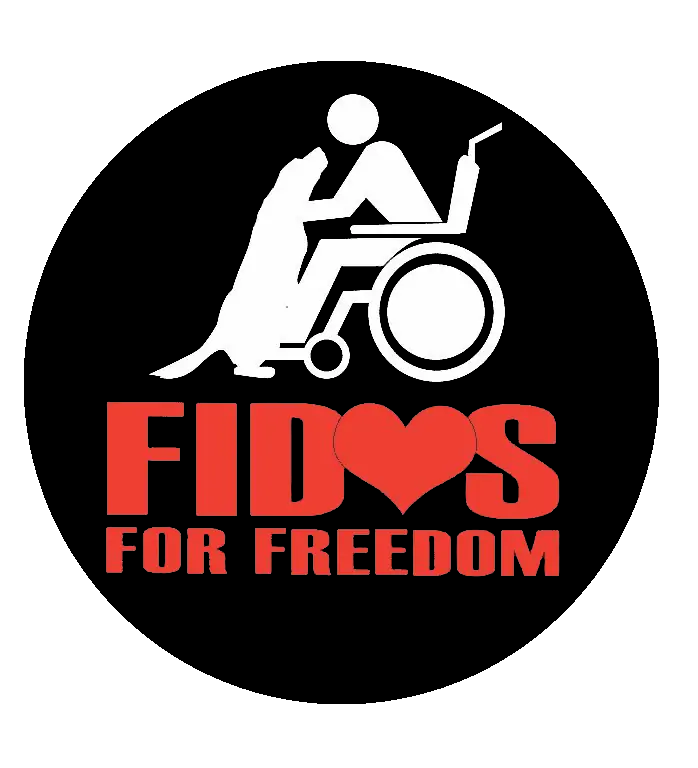The test is divided into four sections, Temperament, Obedience, Meet and Greet, and Interview:
1) Temperament Test
The first thing we will do with your dog is take them into a separate room to interact with two volunteers without you. It will likely be the only time you will be separated from your dog while at Fidos. Your dog will be in a relaxed environment to ensure that the dogs are comfortable being handled by new people. The dogs will be petted, have their feet and ears touched, gently brushed (with the brush you bring for your own dog), be given toys to play with if they are interested in doing so, etc.
What we’re looking for: absence of fearful behavior or aggression. It’s normal for some dogs to be a little bit nervous away from you, and that’s okay, but dogs should not be so overly anxious that they can’t focus on other things enough to interact with our volunteers. Dogs that growl or hide from the volunteers, or dogs that are uncomfortable being handled will not be good candidates for the program. These dogs are clearly telling us that they are not comfortable with the process and we need to respect what they tell us.
2) Obedience Test
- 1 minute visiting stand stay
- 2 minute sit stay
- 5 minute down stay (you are permitted to sit on a chair next to your dog for this exercise)
- Loose leash walking (Dog heels, no pulling on leash)
- 6 foot recall on a leash
This isn’t designed to be an AKC obedience trial — during the testing, you can pet and talk to your dog (for example, you can sit in a chair next your dog for a down stay or gently touch the abdomen of your dog with a finger to remind them to stay standing for the stand-stay [not hold the dog up however]). And treats are allowed if you need to use them to focus your dog for longer tasks. Your dog must pass 3 of the 5 obedience tests on the day of testing to move on in the process. Dogs have 60 days to pass the remaining requirements. During this time they’ll attend the Fidos training classes — you’ll be amazed how much they pick up from the other dogs on what behavior is expected of them.
Note: Passing 3 of the 5 tests does not guarantee admission into the program–dogs should be VERY close to passing all 5 tests.
What we’re looking for: to see if your dog is well-trained and calm enough to remain still for a stranger to pet them, and if they can be controlled in new environments when we need them to wait quietly. Don’t despair if your dog doesn’t pass the obedience section; it does NOT mean that they won’t make an excellent therapy dog. A dog that isn’t ready to pass this time might be ready after an obedience class or two. It is MUCH harder for a dog to pass these skill tests in the facility with so many new things and smells than it is for them to do it in the living room, especially if you have never done any obedience skills with your dog outside the home.
Recommended: Practice with your dog in lots of new places to get him/her used to working around distractions! Good places are near a town center/shops, inside the pet store, at the park, etc. Your dog will need to be used to the distractions of other dogs and people as well as objects/noises.
3) Meet & Greet
You and your dog will be walked through a few introductions to new people, dogs, and experiences to see how you work together as a team, and to see how your dog reacts to new stimuli. Your dog may be watched for reactions to medical equipment such as a wheelchair, walker, and IV pole.
What we’re looking for: how you and your dog interact as a team, your awareness of what your dog is doing while you are paying attention to people and other things, how your dog responds to new or strange experiences (do they recover quickly, become aggressive, or become overly frightened?)
4) Interview
You will have time to sit down with a few volunteers in order that we might get to know you better, and so that you can ask any questions you might have.
What we’re looking for: To get to know you! And to make sure you understand the time commitment involved in becoming a therapy dog team with Fidos. We do things differently, but that’s what we all like about our organization.
